The Beginner’s Guide: David Cronenberg, Director
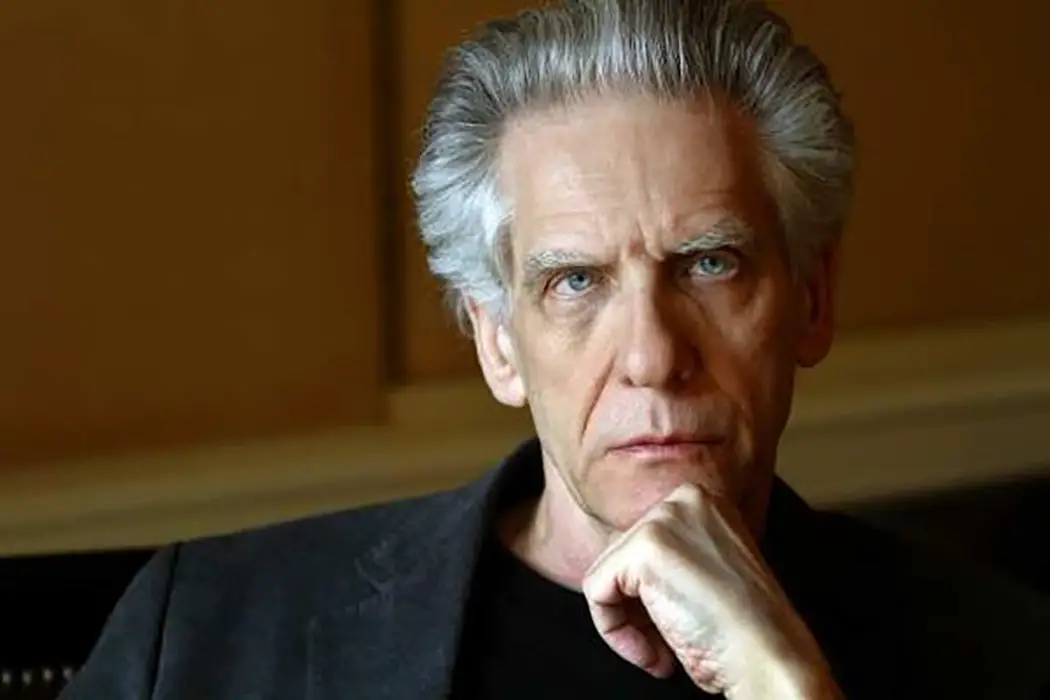
Jax is a filmmaker and producer, and a film &…
“Obviously, Hollywood owes me absolutely nothing. But I don’t owe Hollywood anything either.” – David Cronenberg
We don’t typically think of Canada as the place to produce an expert in grotesque violence (personally, my first thought is Pittsburgh), but then maybe people forget that David Cronenberg was born and raised in Toronto, Ontario. Nicknamed The King of Venereal Horror, which is as disturbing as it is accurate, Cronenberg’s films tend to depict graphic scenes of violence, sexuality, and more often than not both.
Throughout his work, Cronenberg tends to work on themes of the body and the physical manifestation of psychological trauma. In his earlier work, this presents itself in more sexually explicit forms with subtlety taking a back seat to shock, but over time Cronenberg developed the theme to a nuanced point of delicacy, expressing harrowing experiences with profundity and grace.
The Baron of Blood didn’t always plan on a career in filmmaking. Cronenberg graduated from the University of Toronto with a degree in literature, possibly keen to follow in the footsteps of his journalist father, though he had initially planned on becoming a veterinarian. At the time, Canada was trialing an apprenticeship program in filmmaking and television, and this put Cronenberg on the path towards cinema. His true debut film Shivers (1975) achieved cult status with its monster mash up between the zombie and vampire genres. Though he made two short features prior to Shivers (Stereo (1969) and Crimes of the Future (1970)), they were not and are still not widely known except among Cronenberg aficionados.
After the moderate success of Shivers, Cronenberg began finding a wider audience, moving outside of Canada to the rest of North America and across the pond. He also moved out of schlock horror and into something equally grotesque but far more profound.
Note to the reader: while an effort has been made to avoid them, minor spoilers warning ahead.
The Brood (1979)
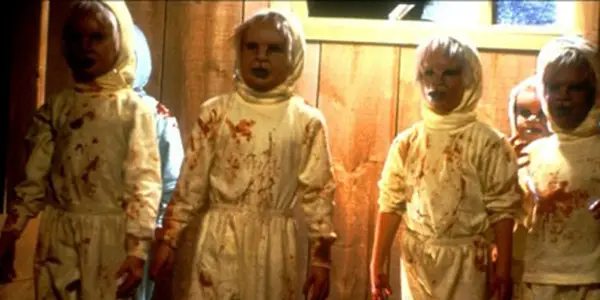
Remarkably prescient and ahead of its time, The Brood explores a fantastical reality in which psychological trauma physically manifests as disease. At its core, the film shows the toll mental illness takes on the family as a unit, not just the individual primarily affected.
The film stars Samantha Eggar and Art Hindle as Nola and Frank Carveth, the central, struggling couple, with Oliver Reed in the role of the mysterious (and pretty creepy) therapist, Dr. Raglan. Dr. Raglan oversees Nola’s care at the psychiatric institution where she is resident, but Frank begins to suspect that the good doctor’s methods are not only unconventional but dangerous. The film explores the disintegration of trust, and the effects of psychiatric trauma on multiple generations – all an extremely personal and cathartic experience for Cronenberg.
Cronenberg describes The Brood as “my version of Kramer Vs. Kramer,” but more “realistic, even more naturalistic.” Viewers in search of feel-good and uplifting movies, keep searching. The Brood is an autobiographical expression of a tumultuous time in the director’s life and it’s the first fully realised ‘Cronenberg film,’ expressing to a high level his obsession on themes of the body, rage, and sex.
Videodrome (1983)
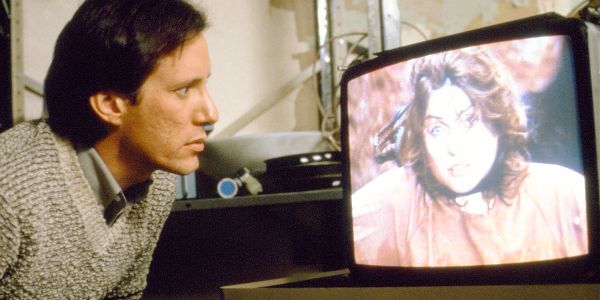
What could be better than a film about a snuff television show that causes sexual arousal in viewers? No really, that’s the plot here. The film stars James Woods as Max Renn, the president of lowbrow Toronto television station CIVIC-TV. Sick with the same cycle of programming, Max begins searching for something fresh and eye-catching when he finds “Videodrome,” a bizarre torture-snuff show airing out of Malaysia. After showing his girlfriend Nikki (Deborah Harry) the show, Renn tracks the broadcast down to Pittsburgh and Nikki disappears off to audition for the show, failing to return. This prompts Renn to start tracking down the production, bringing him deeper and deeper into the mystery that is Videodrome. Things…heat up from here. Just remember, “Long live the new flesh,” and you’re good.
Videodrome could be considered Cronenberg’s first existential film, as well as an important figure in his body horror collection. This film first puts across concepts, such as the merging of biology and technology, which will recur in Cronenberg’s filmography in a more developed fashion with eXistenZ (1999). I’ve noticed in my discussion with fellow fans of Cronenberg that Videodrome often pops up as the favourite of all of his films. It is, I suppose, the full Cronenberg. Body horror, sex, existential musings on the place of technology in this world – all emanating from this one film.
The film unfortunately failed at the box office after difficult test screenings. Cronenberg became embattled with the censors, not only with the MPAA but with the studio itself. Despite having reached an agreement to avoid an X-rating, Universal Pictures sought further cuts, seen as a betrayal by Cronenberg.
“Censors tend to do what only psychotics do: they confuse reality with illusion.” – David Cronenberg
The Fly (1986)
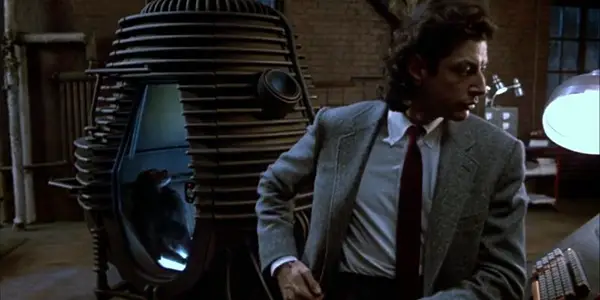
After some success with The Dead Zone (1983), David Cronenberg began work on his first true Hollywood film. Perhaps one of Cronenberg’s most famous films, The Fly stars Jeff Goldblum in the titular role as scientist Seth Brundle, hell bent on perfecting teleportation. During one of his experiments, a fly buzzes into the teleportation pod with him and his DNA merges with that of the fly (hey, that’s the title). A slow and disgusting (very disgusting) transformation begins, but not before investigative journalist turned love interest Veronica Quaife (Geena Davis) becomes concerned. The changes start somewhat subtly, coarse hairs grow and Brundle’s sexual stamina increases dramatically. But as time wears on, Brundle becomes ever more fly-like and well…gross. Veronica leaves him but not long after does she discover that she carries his child, placing her in the unenviable position of choosing to keep a potential mutant baby or having an abortion.
For some reason, Cronenberg also describes this film as autobiographical, and we might baulk at that initially but perhaps we shouldn’t. Despite a wildly different plot and genre (sci-fi rather horror), as well as the injection of occasional humour, the themes of The Fly don’t vary as much from The Brood as it initially appears. What may surprise some readers is the assertion that The Fly is subtle. But stick with me on this. Yes, the film is graphic and gross, but that’s not the kind of subtlety I’m talking about here.
This film deals with the exact same themes as The Brood. The body, rage, sex. Brundle undergoes not just a physical transformation, but a deeply traumatic mental transformation. This mental anguish is expressed physically by the visual transformation that unfolds, but more upsetting is the loss of self. Though Brundle’s physicality shifts, he’s still recognisably Brundle. But his personality changes to such an extent that he turns away those who would help him. In his attempts at self-preservation, he jeopardises the welfare of his family, including his own child. In many ways, The Fly ultimately tells the same story as The Brood.
The Fly was both critically and financially successful for Cronenberg – it even was shortly produced as an opera (replete with music by Howard Shore) not too long ago and I still have the t-shirt. Afterwards, production slowly began moving forward on a long-awaited project, tentatively titled ‘Twins’.
Dead Ringers (1988)
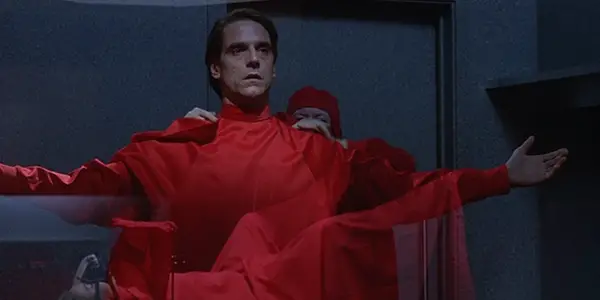
The story of ‘Twins’ was loosely based on real-life identical twin gynecologists, the Marcus brothers, who were found dead in their shared home of a barbiturate withdrawal. Though interested in the project since 1981, financing proved difficult – Hollywood particularly balked at the idea of a film about gynecologists – but eventually came through. Due to the release of Twins (1988), the project was renamed Dead Ringers.
Dead Ringers represents a significant departure for Cronenberg in a few ways. The film takes huge strides forward as Cronenberg moves away from physicality towards a more emotionally based expression of the same themes (this reaches its pinnacle with A History of Violence). This also marks the beginning of Cronenberg’s still on-going collaboration with director of photography Peter Suschitzky. After the intricate and precise camerawork required for this film – those twinned shots of Jeremy Irons were done without the fancy CGI we’ve got today – it’s not surprising that the two continue to work together to this day.
Similar to the Marcus brothers, Dead Ringers revolves around a set of identical twin gynecologists played by Jeremy Irons, Beverly and Elliot Mantle. Their likeness is so similar that the twins often switch places unbeknownst to their patients and even their lovers. Despite the ethical implications, the brothers have no qualms bedding their patients, and one such woman, movie star Clare (Genevieve Bujold) strikes the interest of both men. This sparks a feud between the twins, who normally share everything, including women. Beverly begins to pull away, and as he does Elliot only desires to be more “synchronised” with his brother, causing increasing tension in this subtle yet explosive film.
Dead Ringers takes Cronenberg’s themes on the body, sex, and rage to a new area, one which is possibly even more intimate. The relationship between twins, especially identical twins, continues to fascinate scientists to this day. Dead Ringers brings this relationship to its extreme with Beverly and Elliot, delivering an existential, fascinating, and horrifying cinematic experience.
For his next project, Cronenberg decided to tackle the “unfilmable.”
Naked Lunch (1991)
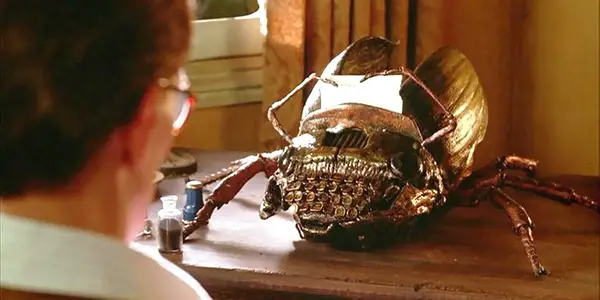
Cronenberg was not the first filmmaker to toy with the idea of adapting Naked Lunch, but he was the first one to be successful. For those of you who haven’t read William S. Burroughs‘ 1959 novel Naked Lunch, this film might seem like the most insane thing you could possibly imagine. For those dedicated souls who have read the book (and seriously, what is wrong with you? What’s wrong with me?), this adaptation is a triumph of simplicity. Cronenberg somehow managed to draw out a plot from the white dragon ride of text buried in nearly 300 pages of practically incomprehensible and impossibly interchangeable characters. According to him, Cronenberg accomplished this by “fusing” himself with Burroughs. However he managed it, it is truly remarkable that a screenplay that makes any sense emerged from these chapters.
Now, the film itself, is absolutely insane. It follows ex-writer (writing is “too dangerous”) Bill Lee (Peter Weller – that’s right, Robocop) through an arrest for drugs possession, where a giant talking beetle gives him a spy assignment. He tells his wife Joan (Judy Davis) that he’s hallucinating, obviously, and she gets him to a doctor, who gives him more drugs (are you seeing a theme?). Due to a complicated mess with his wife (presumably based on Burroughs‘ real life accident with his own wife), upon his return from the doctor’s, mugwumps send Bill to Interzone. Then, things get weird.
The best thing I can do is recommend that you just watch the film. To describe it, I would need to give point-by-point plot descriptions, and this is not the place. Naked Lunch perfectly fits with Cronenberg’s body horror and, though this film doesn’t really relate thematically, I tend to group it with Videodrome. Both are Cronenberg’s most extreme examples of body horror, using differing overall themes and devices. However, unlike Videodrome, Naked Lunch opened to lauding from the critics and awards for the director.
The rest of the ’90s would be ups and downs – M. Butterfly (1993) would prove to be a surprise hit while the later Crash (1996) ended up banned in the US. However, Cronenberg never stopped and eventually a whole new generation was finding his films and exploring them.
A History of Violence (2005)

If you’re part of Generation Y, like me, A History of Violence was most likely your introductory Cronenberg film, and boy, what a great one. Cronenberg joins forces for the first time with Viggo Mortensen (in what would become an extremely fruitful artistic relationship), and Viggo is joined on screen by William Hurt, Maria Bello, and Ed Harris in this energetic and compelling thriller about what lurks beneath the surface of a man. Based on the 1997 graphic novel of the same name, Mortensen plays Tom Stall, your typical quiet small-town happily married (Bello plays his wife Edie) father of two. When a couple gun-toting miscreants sweep into town, Tom suddenly becomes the local hero by putting an end to their shenanigans. However, this act catches the attention of some East Coast mobsters (Harris and Hurt), who become convinced that Tom is their old associate Joey.
The film opens on a sustained and impressive four minute and twenty-eight second shot before its first cut, and this sets the tone and pace for the entire film. Quiet and deliberate, but always moving forward, ever closer, like an oncoming storm, peaceful but ominous before it strikes and devastates. Cronenberg deftly navigates between long, quiet moments and bouts of violent rage, keeping the tension on a knife’s edge. In so doing, Cronenberg takes elements that were heretofore blatantly explored and subsumes them within the internal struggle of a single character. Tom’s tendencies towards anger and violence slither beneath his surface, and the more he tries to quash them, the more it will consume and control him.
Cosmopolis (2012)

This film stands as the most debatable pick for this guide. It received a mixed reception in theatres and by critics, but I want to take the time now to make a case for this film, because I think it is actually brilliant. So rarely does a film come together in the final scene – actually the final moment – as does Cosmopolis. Had the film ended any other way, I think I might have actually hated it. And that to me is absolutely stunning. It does seem to be a film that viewers react to in a variety of ways. For instance, I felt very strongly it was an intense drama, but a (very positive) reviewer on IMDB describes it as “an absurd comedy.”
The film follows Eric (Robert Pattinson) as he takes his limo across Manhattan to get a haircut. That is…basically the entire plot. The film presents a kaleidoscope of characters and bizarre events that unfold over the arduous journey through New York traffic. It’s definitely a slow burn, bringing to mind the maxim, “it’s not about where you’re going, but how you get there.” Pattinson delivers a subdued performance, portraying an asshole that is just interesting enough to keep you with him. Meanwhile, Cronenberg yet again joins forces with Peter Suschitzky to beautiful cinematographic results.
If you head into Cosmopolis expecting the typical Cronenberg themes though, you might be disappointed. This film represents an evolution to something subtler, darker, and possibly more truthful.
You’re ready to begin your journey through the Cult of Cronenberg (not a real cult, sadly). This should be plenty to get you started, but it’s dangerous to go alone, so take a friend. It’s more fun that way! David Cronenberg proves himself time and time again to be a bellwether of Hollywood films, pushing boundaries with his unique brand of writing and directing. He’s become incredibly influential to a new generation of artists (myself included), spawning a resurgence in body horror films and even inspiring band names.
“Everybody’s a mad scientist, and life is their lab. We’re all trying to experiment to find a way to live, to solve problems, to fend off madness and chaos.” – David Cronenberg
Did I skip your favourite Cronenberg film? Tell me what you think of David Cronenberg in the comments.
References
Rodley, Chris, ed. Cronenberg on Cronenberg. London, UK: Faber and Faber, 1997. Print.
Does content like this matter to you?
Become a Member and support film journalism. Unlock access to all of Film Inquiry`s great articles. Join a community of like-minded readers who are passionate about cinema - get access to our private members Network, give back to independent filmmakers, and more.
Jax is a filmmaker and producer, and a film & tv production lecturer at the University of Bradford and is also completing a PhD about Stan Brakhage at the University of East Anglia. In the remaining "spare time", Jax organises the Drunken Film Fest, binges bad TV, and dreams of getting “Bake Off good” with their baking.












